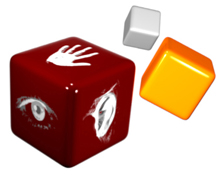

About Faculty Curriculum Facilities SOPA Events Pre-2018 DISIS Events Portfolio Pre-2014 Portfolio L2Ork Directions Contact • • • SOPA ICAT Creativity+Innovation Linuxaudio.org • • •
--Wassily Kandinsky CURRICULUM
Students completing the DISIS curriculum are expected to attain a strong foundation as self-sufficient artists, researchers, and professionals in areas of electroacoustic music and multimedia art with focus on interactive multimedia systems. Such graduates are not only aware of the latest developments in areas closely associated with their area of expertise but are also determined and motivated individuals and collaborators capable of driving just about any plausible idea from its inception to implementation. All DISIS students are also encouraged to pursue the recording & production courses to broaden their knowledge of audio engineering, recording, and production. |
|